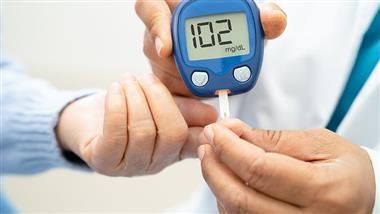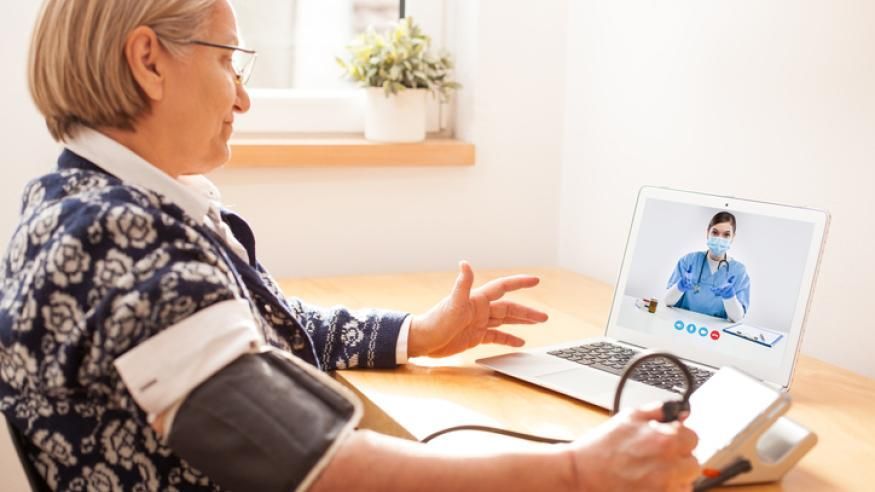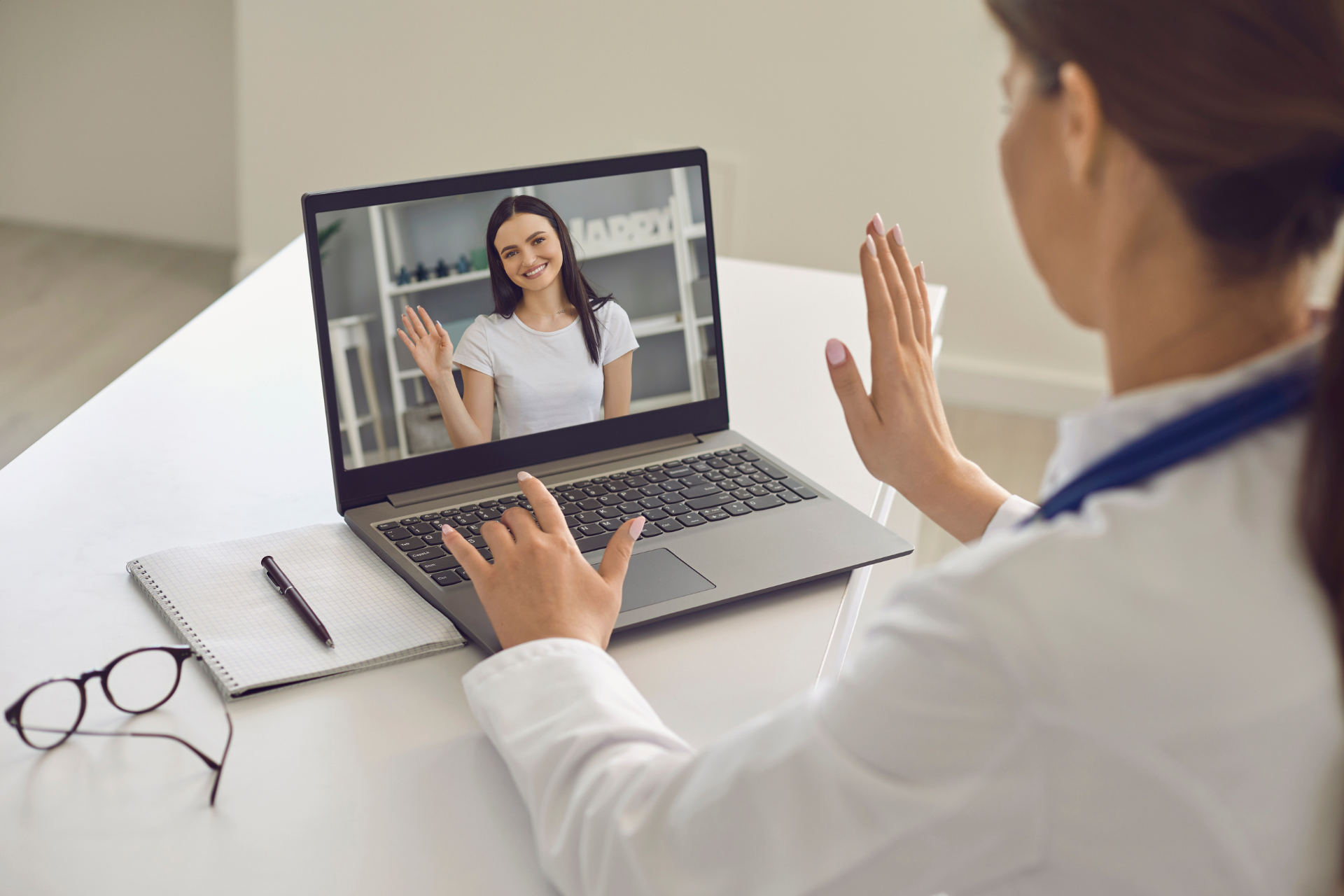Dexcom Launches Direct-to-Watch: G7 Now Connects Directly with Apple Watch in U.S.
With the latest Dexcom G7 app update, the continuous glucose monitor communicates directly via bluetooth to the Apple Watch Series 6 or later.
Key Takeaways:
- The Dexcom G7 continuous glucose monitor (CGM) now connects directly to Apple Watch in the U.S.
- Dexcom’s software apps were already compatible with devices such as the Apple Watch, but they required connection to a nearby smartphone.
- The Dexcom Direct to Apple Watch feature is only available to Dexcom G7 users in the U.S., United Kingdom, and Ireland, but will expand to more markets later this month.
For Dexcom CGM users who are early tech adopters, life has just gotten a bit easier: Dexcom G7 wearers can now see their blood glucose levels without an iPhone close by.
Dexcom announced today that the G7 continuous glucose monitoring (CGM) system now connects directly to Apple Watch in select countries. The direct-to-watch feature could be a game-changer for those to who want to be able to monitor their blood glucose in a number of situations where they may not want to be tethered to a phone – while playing sports, taking a shower, or going for an unplugged walk in nature, for example. It may also be a radical improvement for young children with diabetes who are dependent on CGMs but may not have cell phones.
How it works
This new rollout makes the G7 the first and only CGM system to connect to multiple devices at once with a direct-to-Apple Watch capability.
“Direct to Apple Watch has been one of our most requested features and we’re thrilled to roll it out to Dexcom G7 users in the U.S. and around the world,” Jake Leach, executive vice president and chief operating officer at Dexcom, said in a statement.
The Dexcom G7 now connects using its own dedicated Bluetooth connection to send blood sugar information and alerts to multiple devices, such as a smartphone, a CGM receiver, an AID system, and an Apple Watch, directly and simultaneously.
Dexcom's Direct-to-Apple Watch user interface looks similar to its previous smartwatch interface. (Photo credit: Dexcom)
Find more details about the feature on Dexcom’s FAQ page.

How G7’s Direct-to-Apple Watch differs from Dexcom’s current smartwatch features
The G7 app will show a "Direct to Watch" function that can be selected by the user under "Connections." (Photo credit: Dexcom)
Historically Dexcom has been compatible with smartwatches such as the Apple Watch, Garmin, or Google Pixel Watch. However, this compatibility relied on connection to a smartphone (which mirrors the glucose reading on the watch) rather than an independent Bluetooth connection, meaning CGM wearers were required to keep their phones within Bluetooth range – approximately 33 feet – for the monitor to stay connected. Because the G7 now connects directly and independently to Apple Watch, CGM wearers will be able to view current blood sugar readings or issue glucose-related alerts even when their iPhone isn't close by.
Many Dexcom customers have been eagerly awaiting the day that diabetes management goes hands free with an Apple Watch. In the past, the only way for a user to enjoy the straight-to-wrist feature of having blood glucose notifications sent directly to a watch has been through third-party-supported apps such as xDrip and specific watches that could support that software.
Dexcom G7 Direct-to-Apple Watch: Tech requirements and limitations
Currently, the new direct watch connectivity feature only works with the G7 system. (Photo credit: Dexcom)
The Dexcom direct-to-watch upgrade does come with some requirements, including the following:
- A Dexcom G7 (this feature currently does not work with the Dexcom G6)
- An Apple Watch Series 6 or later that is running WatchOS 10 or later
- To pair and set up the system initially, an iPhone running iOS 17 or later
New adopters should view this feature as a supplementary way to see data and get alerts, not a replacement for their smartphones, since a phone is still required to set up the initial pairing. And Dexcom’s Share feature, which allows users to allow data to be seen by friends or family, is not available on smartwatches, so sharing data still requires a phone to be within range.
Direct-to-Apple Watch: Rollout details and expansion plans
Dexcom G7's Direct-to-Apple-Watch feature could be a game-changer for people tracking blood glucose during sporting activities.
Dexcom’s direct-to-watch feature made news in March when it was previewed during the International Conference on Advanced Technologies and Treatments for Diabetes in Florence, Italy.
The feature first launched in Ireland and the United Kingdom, but is now available to users in the U.S. as well. The company has stated that it also expects the feature to launch in additional countries later this month.
Leach, Dexcom’s COO, added that the company is hoping to grow its list of compatible devices, and hoping this will soon include Android and Samsung watches.
It’s unclear whether or not Dexcom plans to add this feature for its previous generation G6 CGM, but in the meantime, this G7-exclusive feature may help to encourage G6 users who have been slow to upgrade to the G7 system.
Dexcom’s next launch will likely be the rollout of the Stelo, an over-the-counter CGM without alerts and alarms designed for people with diabetes who are not on insulin therapy. The device is expected to be available this summer.
Healthy Bites
















